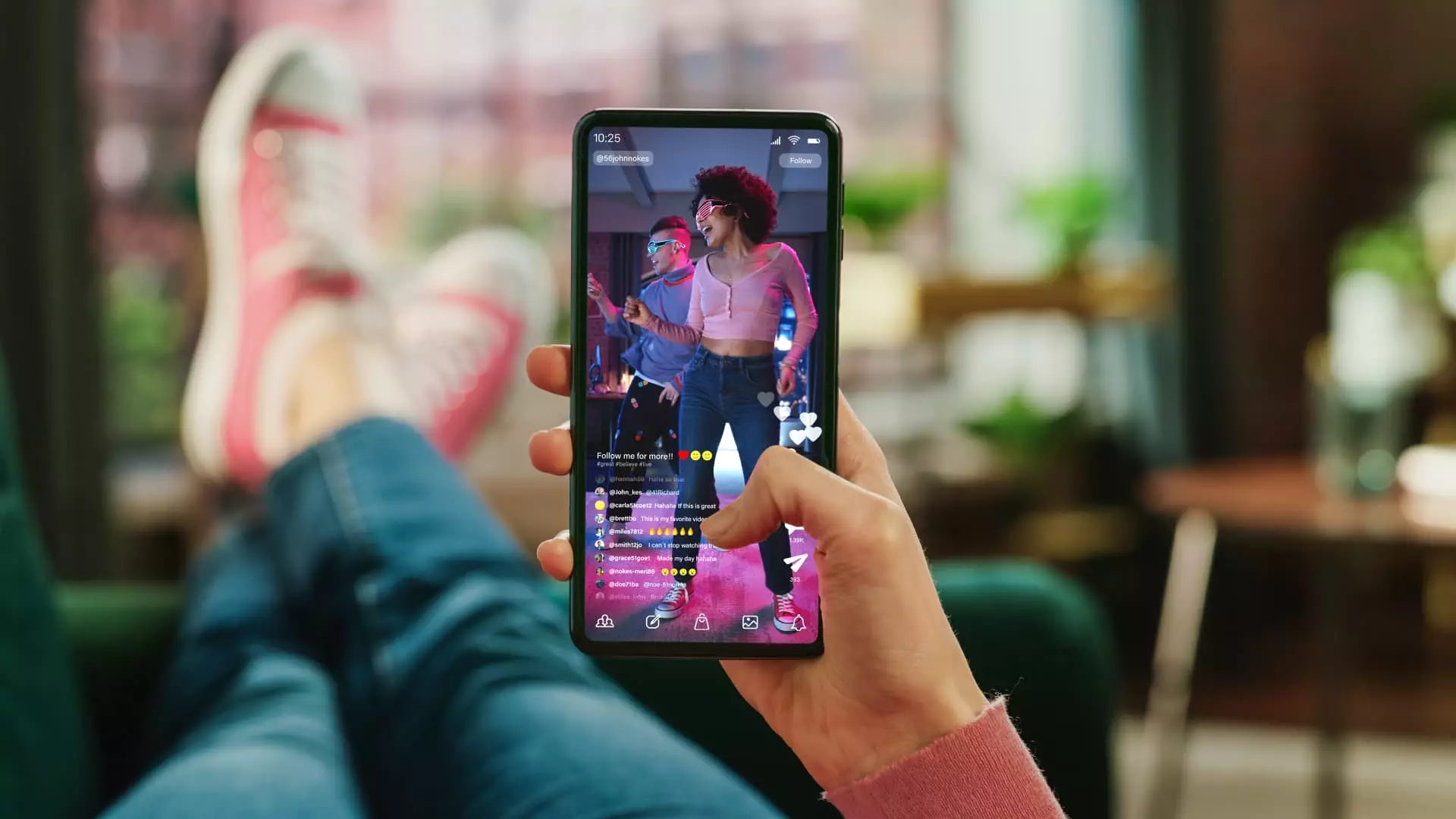Since its global debut in 2016, TikTok, owned by ByteDance, has revolutionized how we consume digital content, amassing an astonishing 1.12 billion monthly active users from across the globe. The platform has become synonymous with short-form video, drawing users into a vortex of entertainment that has redefined their daily interactions with social media. American users reportedly spend around 108 minutes daily on TikTok, a staggering statistic that illustrates the platform’s captivating nature. The immense user engagement demonstrates a critical cultural shift; TikTok is not merely another application but a cultural phenomenon that adapts to the insatiable desires of youth for immediate gratification and entertainment.
As TikTok ascends to unprecedented heights, competitors such as Meta with Instagram Reels and Google through YouTube Shorts are vigorously trying to keep pace. These behemoths of tech realize the dire necessity to adapt their strategies to maintain relevance in an industry that TikTok has effectively disrupted. With young people increasingly viewing TikTok as their primary source for entertainment, trends, news, and even shopping, the platform is compelling others to rethink their approaches to user engagement and content creation.
The Competition Heats Up
In a rapid response to TikTok’s commanding market presence, rivals are rolling out new features and creator tools in a bid to lure TikTok users. Innovations include experiments with separate apps aimed at mimicking TikTok’s seamless user experience. LinkedIn, a platform traditionally dominated by professional networking, now finds itself venturing into this wild frontier, experimenting with TikTok-esque feeds to capture younger audiences craving bite-sized content. This frantic scramble underscores an undeniable truth: TikTok has not only set a new standard in social media but also elucidated the urgency for competitors to innovate or risk extinction.
However, the race to replicate TikTok’s magic is fraught with challenges. While short-form content is undeniably popular, the ability for rivals to successfully mirror TikTok’s algorithmic precision remains unfulfilled. The focus on quantity over quality raises concerns about whether these platforms can authentically engage users without falling into the trap of fleeting entertainment that offers little substance.
A Double-Edged Sword: Engagement vs. Mental Health
Nevertheless, every rose has its thorn, and as TikTok blossoms, critical concerns about mental health arise. Experts are increasingly warning about the adverse effects of excessively consuming short-form content, particularly among younger audiences prone to anxiety and disrupted sleep patterns. Dr. Yann Poncin from Yale University highlights the alarming psychological landscape that emerges from a culture of “doom scrolling.” The thrill of endless scrolling might deliver instant gratification, but it also diminishes our ability to engage meaningfully with longer narratives.
Historically, entertainment has revolved around immersive storytelling that allows us to lose ourselves in rich narratives. Now, the emphasis on quick snapshots and algorithm-driven content can leave users feeling more fragmented than fulfilled, suggesting a troubling cultural shift away from deeper connections with media. As TikTok continues evolving, including introducing features like e-commerce capabilities, it raises dire questions about the sustainability of this new form of digital engagement.
The Challenge of Monetization
Despite TikTok’s astronomical user engagement, the monetization of short videos presents a formidable challenge. The economics of short content differ significantly from those of long-form videos. For creators, the route to transforming viral moments into sustainable revenue is steep and laden with difficulties. TikTok’s ad revenue, which hit an estimated $23.6 billion last year, has not necessarily trickled down effectively to its content creators, many of whom earn mere dollars per million views—an unsustainable model for any budding influencer.
YouTube’s introduction of Shorts similarly struggles to provide sufficient payouts, with creators receiving a mere four cents per 1,000 views, substantially less than its successful long-form videos. This disparity casts a shadow over the future of content creation on these platforms at a time when engagement is prioritized over compensation. Amidst these challenges, Meta has begun to facilitate brand partnerships and tools like Trial Reels, reflecting a genuine effort to empower creators while acknowledging that the journey toward effective monetization remains a work in progress.
As regulatory scrutiny looms over TikTok’s ownership and potential bans in regions like the US, competitors see this as an opportunity to capitalize. With projections indicating that Meta and YouTube could seize up to 50% of advertising dollars redirected away from TikTok, the stakes have never been higher for all players involved. The social media landscape is at a crossroads, one that could reshape the digital experience for users around the world.


Leave a Reply